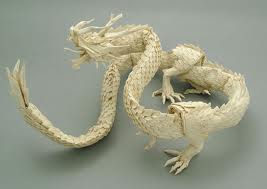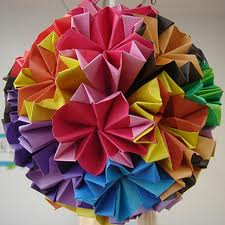 There are two typical types of art: additive and subtractive. The process of painting or sculpting involves adding material to the original medium – additive -, and sculpting requires material to be chipped away – subtractive. Origami, however, falls into its own category of metamorphic art. From one piece of 2-D paper, a 3-D design comes to life, nothing added, cut, or glued; simply several folds are creased into a square sheet.
There are two typical types of art: additive and subtractive. The process of painting or sculpting involves adding material to the original medium – additive -, and sculpting requires material to be chipped away – subtractive. Origami, however, falls into its own category of metamorphic art. From one piece of 2-D paper, a 3-D design comes to life, nothing added, cut, or glued; simply several folds are creased into a square sheet.
Woong-Soo Lee, senior, enjoys creating Origami as a hobby. “I decided to learn Origami because when I was little, I had too much spare time and too much paper so, obviously, folding it became natural.”
The word ‘origami’ comes from the combination of Japanese words ‘Ori’, meaning to fold, and ‘gami’, meaning paper. Although the word’s roots are founded in Japan, the craft originally began in China.
People in Asia weren’t the only ones folding, however. Africans practiced this art, brought it to Spain, and from there it traveled to South America. Each group of people specialized in different designs, from geometric figures to models of living creatures.
Today, the art is utilized for more practical uses, impacting science and medicine. Origami artists have helped design satellites which fold in on themselves until released into orbit. DNA is folded, and proteins are as well.
Despite the incredible influence Origami may have on technology, it remains relatively simple. “The main thing is, you don’t need anything except for paper,” said Lee. “Origami is technically from a square piece of paper, but it really doesn’t matter.”
“I find it enjoyable because you can start folding things that aren’t made out of paper — one time I left a tip at a restaurant made out of dollar-bill paper cranes,” said Lee.
David Rhee, senior, learned the art growing up. His parents taught him the traditional Korean trade, a skill he retains to this day. Although he does not practice constantly, he does fold when he finds extra time on his hands. “People think of it as just folding paper, but it’s an art.”
Not only can paper be molded to model specific objects, it can have an abstract aspect as well. Although simple figures can be created from only several folds, origami can become very complicated.
“[Origami is] very cool,” said Rhee. “It seems easy, but it takes a lot of intricate steps.”
Although Lee said he believes origami shouldn’t remain popular, he recognizes the pleasure it gives to some. “[F]or people who can’t see the real happiness, paper is everything to them. It will continue [to be popular] because there will continue to be people and paper,” said Lee.
Leave a Reply